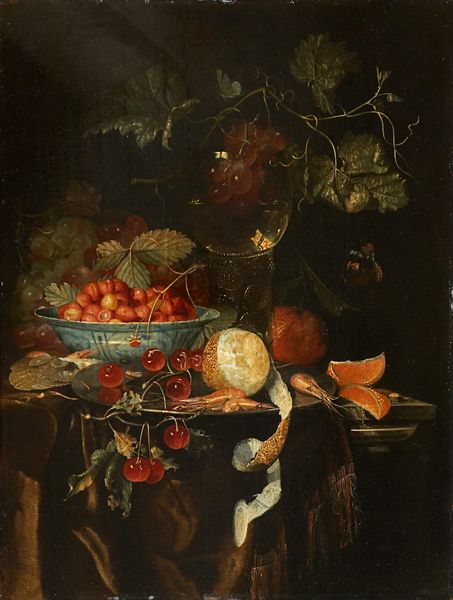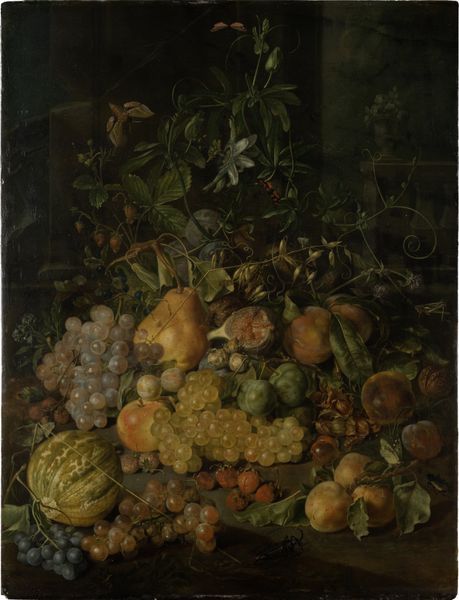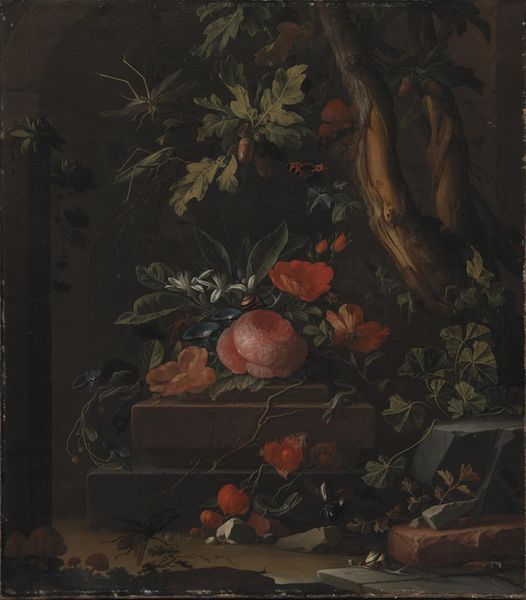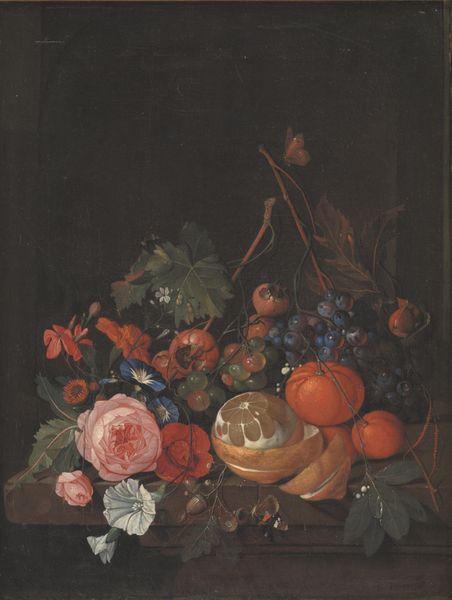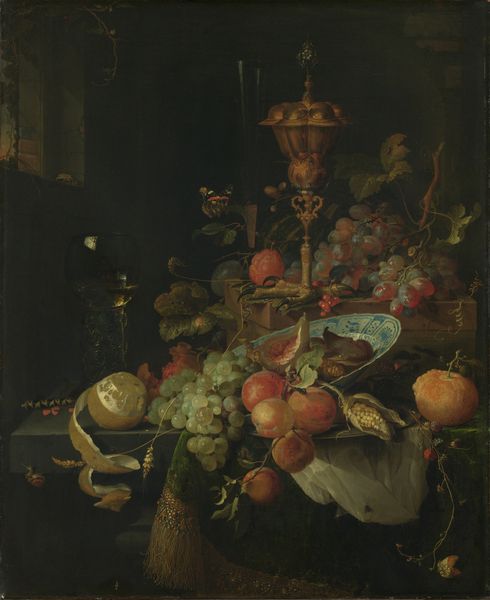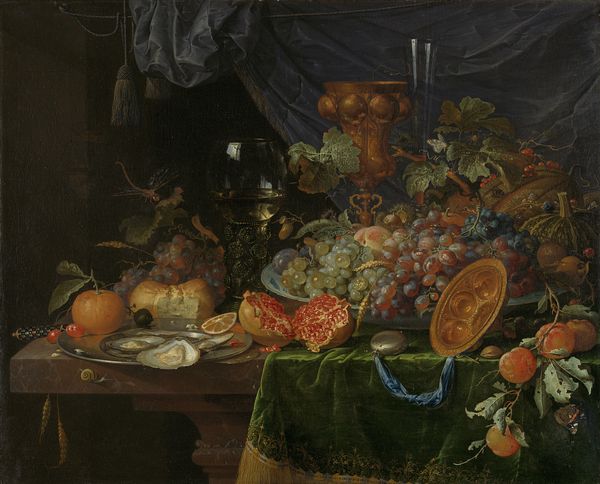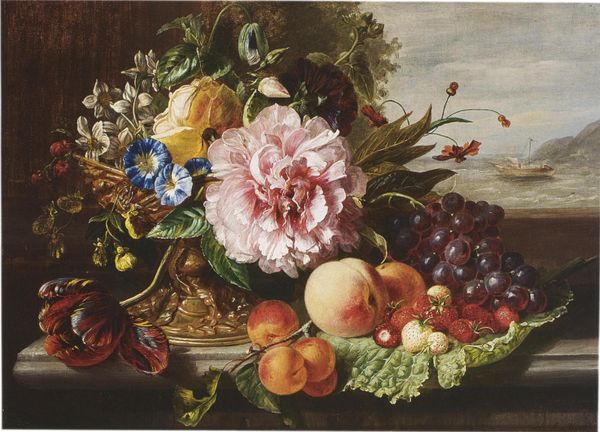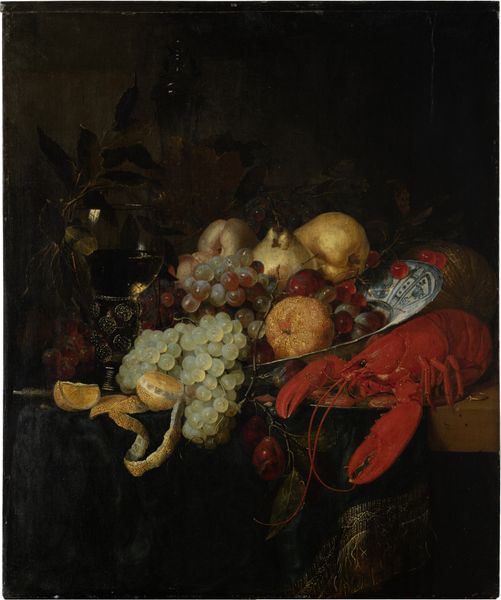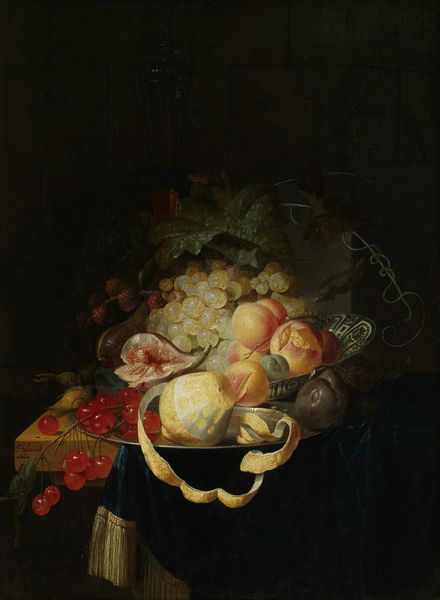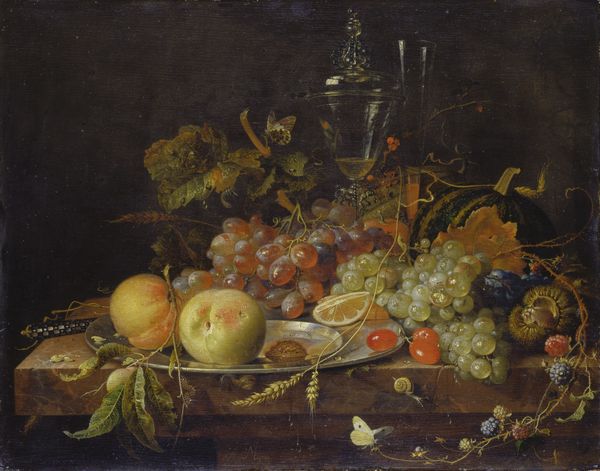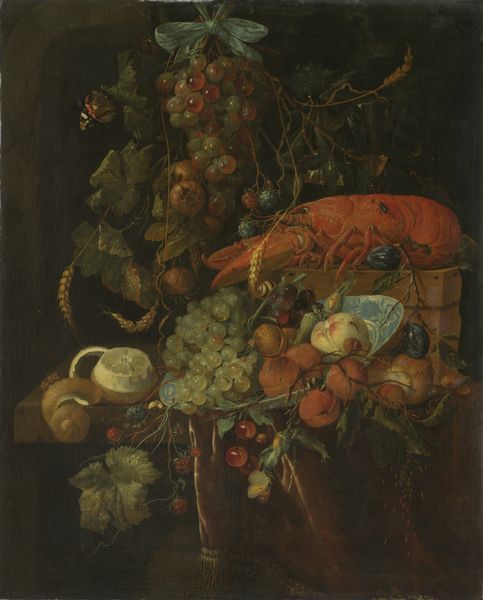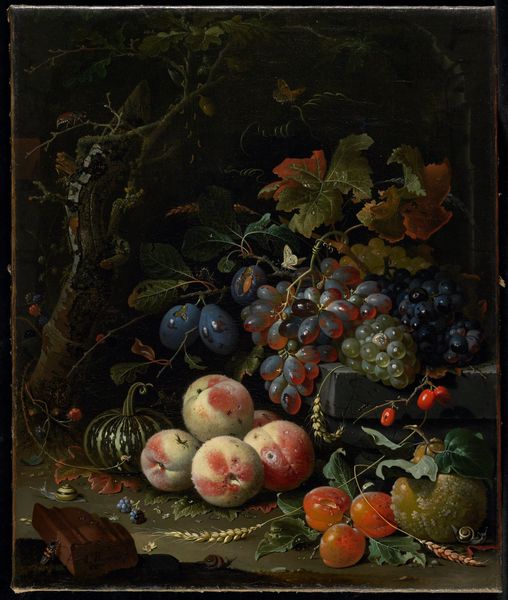
oil-paint, glass
#
portrait
#
baroque
#
dutch-golden-age
#
oil-paint
#
glass
#
oil painting
#
vanitas
#
fruit
#
genre-painting
#
realism
Dimensions: height 55 cm, width 45 cm, depth 6.8 cm
Copyright: Rijks Museum: Open Domain
Curator: Abraham Mignon, active in the 17th century, crafted this striking still life somewhere between the 1660s and 1670s. It's presently entitled "Still Life with Fruit, Oysters, and a Porcelain Bowl," an oil on canvas exhibiting incredible detail. Editor: Oh, wow, my initial reaction is the contrast. Such rich, sumptuous, almost decadent looking elements, positioned against what feels like inevitable decay and a certain emptiness, you know? A melancholic sort of tableau. Curator: It does carry those sentiments effectively. In this piece, we find the opulent trappings common to the Dutch Golden Age alongside symbolic undertones that reflect deeper cultural anxieties. Consider the oyster shells— simultaneously representing luxury and their inevitable emptiness once consumed. Editor: I like what you said about luxury against emptiness because something about that silver glass is unsettling to me, reflecting back almost like a specter in the corner of a fancy dinner party setting, suggesting reflection on vanity perhaps. Curator: Precisely. The inclusion of what seem like overripe or splitting fruit like the pomegranate reinforces the vanitas theme: a popular motif reminding viewers of life's fleeting nature. Mignon cleverly employs various textures and reflective surfaces –the glass, the pearls in the oysters– to animate the transience. Editor: The detail! I'm suddenly struck by it; there's a small snail down near the tablecloth! So slow, so earthbound, a contrast to the other elements which seem to exist outside the mundane. Mignon creates an enclosed space, heavy with its own symbolic language that really encourages an examination of material excess. Curator: Mignon certainly orchestrates that internal conversation. Every carefully rendered object—each grape, shell, or glint of metal—serves as a tiny philosophical statement contributing to a complex visual and intellectual discourse, rooted in anxieties around wealth and morality of the time. Editor: Yes. It's interesting how beauty and, let's say, uncomfortableness exist side by side. So vibrant yet undeniably somber. You could easily imagine this hanging in the study of a brooding philosopher back in the 1670s. Curator: An apt speculation indeed. Mignon offers an intriguing lens into how beauty, pleasure, and mortality were viewed through the prism of 17th-century society. Editor: Well, I think I might avoid oysters for a while after pondering that. Still, so thought provoking and strangely lovely.
Comments
rijksmuseum about 2 years ago
⋮
The composition of this still life is both sumptuous and inventive. Mignon set the roemer, the green glass at the left, upside down. Reflected in it is a window, and a view of a church tower in Utrecht, where Mignon lived. The porcelain bowl from Asia was a sign of prosperity as well as being a showpiece on the table.
Join the conversation
Join millions of artists and users on Artera today and experience the ultimate creative platform.

